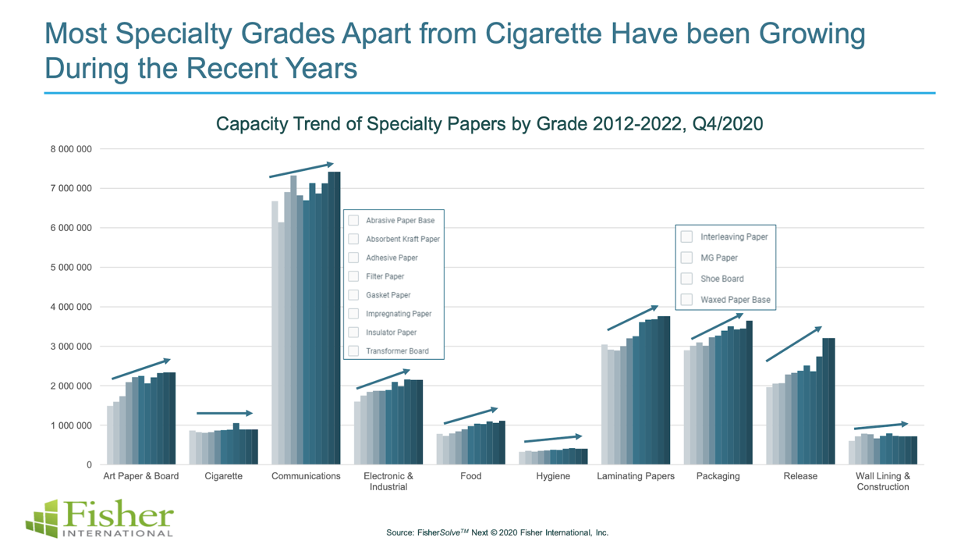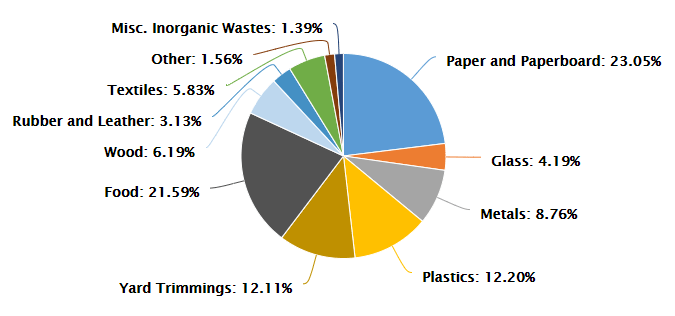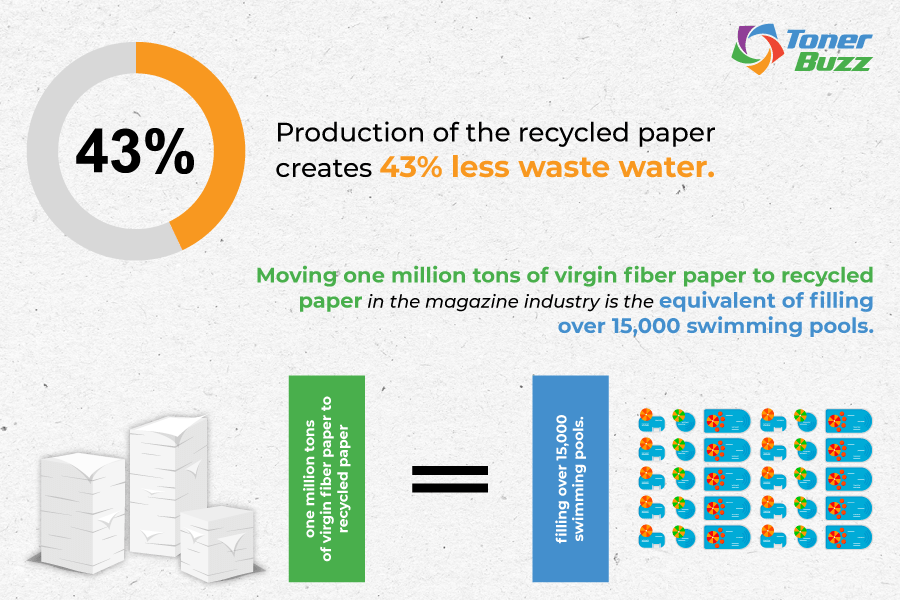How does specialty paper impact the environment?
Environmental Impact of Specialty Paper: An In-Depth Exploration
Understanding the Environmental Impact of Specialty Paper Production
Specialty paper production plays a significant role in various industries, including packaging, printing, and publishing. While it offers unique qualities and functionality, it is essential to recognize the potential environmental impact associated with its production. This section will delve into the environmental implications of specialty paper production, focusing on deforestation, key environmental factors, and resource consumption.
How does Specialty Paper Production Contribute to Deforestation?
The production of specialty paper often requires the utilization of natural resources, particularly wood fibers sourced from trees. This reliance on trees for raw materials contributes to deforestation, which has far-reaching consequences for the environment. Deforestation not only leads to the loss of valuable habitats for numerous species but also contributes to climate change. Trees play a crucial role in carbon sequestration, capturing and storing large amounts of CO2. The felling of approximately 17 trees per tonne of white paper produced further exacerbates the environmental impact of specialty paper production.
What are the Key Environmental Factors Impacted by Specialty Paper Production?
Specialty paper production has several key environmental factors that are impacted throughout its lifecycle. One notable factor is the consumption of energy and water. The paper production industry is known to consume vast amounts of both, resulting in substantial greenhouse gas emissions. For instance, the manufacturing of paper emits 3.3 kg of CO2 for every kilogram of paper produced. This emphasizes the need for sustainable practices within the industry to mitigate its environmental impact.
Another critical environmental concern is water pollution. Specialty paper production involves water-intensive processes that can contribute to water pollution. Harmful chemicals, such as chlorine dioxide, used in the production process, can contaminate water sources and harm aquatic life. Additionally, the production of paper generates organic solid waste, inorganic residues, and large volumes of waste paper, contributing to soil degradation.
What Statistics Highlight the Resource Consumption in Specialty Paper Production?
The resource consumption associated with specialty paper production is significant and should not be overlooked. The paper industry, including specialty paper production, is responsible for approximately 2% of global industrial emissions. This highlights the substantial impact of the industry on greenhouse gas emissions and climate change. However, it is crucial to note that sustainable practices can help minimize these emissions and promote environmental sustainability.
Moreover, recycled paper offers a more eco-friendly alternative to virgin paper. It requires 70% less energy to produce and uses fewer raw materials. By choosing recycled paper and adopting sustainable practices, the environmental impact of specialty paper production can be significantly reduced.
In conclusion, specialty paper production has a notable environmental impact, particularly in terms of deforestation, energy consumption, water pollution, and resource consumption. Understanding and addressing these issues is crucial for promoting sustainable practices within the industry and minimizing its ecological footprint. In the next section, we will explore the sustainable practices being adopted in the specialty paper industry to mitigate these environmental impacts.
Sustainable Practices in the Specialty Paper Industry
The specialty paper industry plays a significant role in various sectors, including packaging, publishing, and manufacturing. However, the production of specialty paper can have detrimental environmental effects. In this section, we will explore some sustainable practices adopted in the specialty paper industry, potential alternatives to reduce negative effects, and the role of eco-friendly specialty paper in minimizing environmental impact.
Sustainability Practices in the Specialty Paper Industry
- Efficient Resource Management: Specialty paper manufacturers are adopting resource-efficient practices to minimize the consumption of water, energy, and raw materials. This includes optimizing production processes, investing in energy-efficient machinery, and implementing water recycling systems. These efforts reduce the ecological footprint of the industry while maintaining production efficiency.
- Recycled Fiber Usage: Many specialty paper manufacturers are incorporating recycled fibers into their production processes. By utilizing recycled materials, the demand for virgin fibers is reduced, leading to a decrease in deforestation and habitat destruction. Additionally, recycled paper production consumes less energy and water compared to paper made from raw materials, making it a more sustainable alternative.
- Chemical Management and Reduction: The specialty paper industry aims to minimize the use of harmful chemicals, such as chlorine dioxide, which is commonly used in the bleaching process. Implementing eco-friendly bleaching methods, such as oxygen-based bleaching, reduces water pollution and the release of toxic substances into the environment.
- Waste Management and Recycling: Specialty paper manufacturers are implementing efficient waste management systems to reduce the environmental impact of solid waste generated during production. This includes recycling paper scraps, reusing materials, and properly disposing of hazardous waste. By diverting waste from landfills and promoting recycling, the industry contributes to a circular economy and mitigates environmental degradation.
Alternatives and Solutions to Reduce Environmental Effects
- Digital Transformation: One alternative to reducing the environmental impact of specialty paper is promoting digitalization. By embracing digital channels and electronic documentation, the demand for physical paper can be reduced significantly. This shift not only minimizes resource consumption but also enhances efficiency and accessibility.
- Bio-based and Renewable Materials: Specialty paper manufacturers are exploring alternative raw materials that are more sustainable and renewable. For example, using bamboo or hemp fibers as substitutes for traditional wood fibers can significantly reduce deforestation and promote responsible sourcing.
- Water-based Coatings: Traditional specialty papers often require chemical-based coatings for enhanced durability and performance. However, the use of water-based coatings reduces the dependency on harmful chemicals, contributing to a cleaner and safer production process.
- Lifecycle Thinking: Adopting a lifecycle approach in the specialty paper industry involves considering the entire product lifecycle, from sourcing raw materials to disposal. By analyzing the environmental impacts at each stage, manufacturers can identify opportunities for improvement and implement more sustainable practices.
The Impact of Using Eco-friendly Specialty Paper
Choosing eco-friendly specialty paper can have several positive environmental impacts, including:
- Reduced Deforestation: Eco-friendly specialty paper is often produced from sustainably sourced or recycled materials, reducing the demand for virgin fibers and mitigating deforestation. This helps protect natural habitats and preserve biodiversity.
- Energy and Water Conservation: Eco-friendly specialty paper production consumes fewer resources, including energy and water, compared to conventional paper manufacturing. This reduction in resource consumption not only minimizes environmental impact but also reduces the carbon footprint of the industry.
- Reduced Emissions and Pollution: Specialty paper production is responsible for significant greenhouse gas emissions and water pollution. However, eco-friendly specialty paper production employs cleaner and more sustainable manufacturing methods, leading to reduced emissions and water pollution.
- Positive Brand Image and Consumer Trust: Choosing eco-friendly specialty paper aligns with sustainable and responsible business practices, enhancing the brand image and building consumer trust. Consumers are increasingly prioritizing eco-friendly products, and using sustainable specialty paper demonstrates a commitment to environmental protection.
In conclusion, the specialty paper industry has been adopting various sustainable practices to reduce its environmental impact. These practices include efficient resource management, the usage of recycled fibers, proper waste management, and chemical reduction. Additionally, exploring alternatives such as digital transformation and using bio-based materials can further minimize negative effects. By choosing eco-friendly specialty paper, businesses can contribute to reducing deforestation, conserving energy and water, minimizing emissions and pollution, and promoting a positive brand image. It is crucial for companies and consumers alike to prioritize environmentally sustainable choices and support the transition towards a greener specialty paper industry.
Promoting Environmental Sustainability through Specialty Paper Choices
In our previous sections, we discussed the environmental impact of specialty paper production and explored sustainable practices within the industry. Now, let’s delve into how we can actively promote environmental sustainability through our specialty paper choices.
How can Forest Stewardship Council certified substrates contribute to responsible production and recycling?
Forest Stewardship Council (FSC) certification is a crucial factor to consider when selecting specialty paper substrates. FSC certification ensures that the paper comes from responsibly managed forests that prioritize environmental protection, social benefits, and sustainable practices. By choosing FSC certified substrates, we can contribute to responsible production and recycling in several ways:
- Preserving Forest Ecosystems: FSC-certified substrates are sourced from forests that adhere to strict environmental standards, promoting biodiversity conservation, water quality protection, and carbon sequestration. These sustainable forestry practices help mitigate deforestation and protect fragile ecosystems.
- Supporting Local Communities: FSC certification not only emphasizes environmental aspects but also considers the social and economic well-being of forest-dependent communities. By choosing FSC-certified specialty paper, we indirectly support these communities, contributing to their livelihoods and promoting social equity.
- Promoting Responsible Recycling: FSC-certified substrates are manufactured with a focus on reducing waste and maximizing recyclability. These substrates are designed to be compatible with existing recycling processes, ensuring that they can be efficiently recycled into new paper products, reducing the demand for virgin materials.
- Ensuring Chain of Custody: FSC certification provides a transparent and traceable supply chain, enabling us to verify that the specialty paper we choose comes from responsibly managed sources. This gives us the confidence that our paper choices align with our commitment to environmental sustainability.
What are the benefits of choosing specialty paper substrates for environmental sustainability?
When it comes to eco-friendly specialty paper options, Relyco stands out as a leader in environmental sustainability. Their specialty paper substrates offer a range of benefits that contribute to minimizing the environmental impact of paper production and usage:
- Sustainable Forest Initiative (SFI) Certification: Relyco’s specialty paper substrates are SFI certified, which means they are sourced from responsibly managed forests. This certification ensures the protection of forest ecosystems, wildlife habitat, and water quality, aligning with our commitment to environmental sustainability.
- Reduced Environmental Footprint: Relyco’s specialty paper substrates are manufactured using efficient and sustainable processes that minimize energy consumption, water usage, and waste generation. By choosing Relyco, we can significantly reduce the environmental footprint associated with specialty paper production.
- Versatility and Durability: Relyco offers a wide range of specialty paper substrates designed for various applications, including tear-resistant trail maps (like their TRIDURA product) and carbonless forms (such as REIMAGE). These durable substrates extend the lifespan of printed materials, reducing the need for frequent reprints and minimizing paper waste.
- Commitment to Environmental Sustainability: Relyco has demonstrated a strong commitment to environmental sustainability in their 2023 Impact Report. They actively engage their employees in eco-friendly initiatives, invest in energy-efficient manufacturing processes, and support local communities. By choosing Relyco specialty paper, we align ourselves with a company that shares our values and actively promotes environmental protection.
Why is it important to prioritize sustainable print solutions for outdoor activities?
Outdoor activities hold a special place in our lives, providing an opportunity to connect with nature and appreciate the beauty of the world around us. However, these activities often come with a need for printed materials, such as maps, brochures, and guides. Prioritizing sustainable print solutions for outdoor activities is essential for several reasons:
- Minimizing Environmental Impact: Outdoor activities take place in fragile ecosystems that must be protected. By choosing sustainable print solutions, such as eco-friendly specialty paper, we reduce the environmental impact of our outdoor endeavors. This includes reducing deforestation, minimizing waste generation, and promoting responsible resource management.
- Educating and Raising Awareness: Outdoor activities often involve learning about nature, wildlife, and environmental conservation. By using sustainable print materials, we send a message of environmental responsibility and raise awareness among participants and visitors. These materials provide opportunities to educate and inspire others to protect and respect the natural world.
- Setting a Positive Example: When we prioritize sustainable print solutions for outdoor activities, we set a positive example for others to follow. By showcasing our commitment to environmental sustainability, we encourage others to reconsider their own print choices and make conscious decisions that contribute to a greener future.
- Enhancing Brand Reputation: For businesses and organizations involved in outdoor activities, prioritizing sustainable print solutions can enhance brand reputation and credibility. Demonstrating a commitment to environmental sustainability can attract environmentally conscious customers and partners, leading to long-term success and positive brand recognition.
In conclusion, specialty paper choices play a crucial role in promoting environmental sustainability. By opting for Forest Stewardship Council certified substrates, such as those offered by Relyco, we can contribute to responsible production and recycling. Additionally, prioritizing sustainable print solutions for outdoor activities allows us to minimize our environmental impact, educate and raise awareness, set a positive example, and enhance our brand reputation. Let’s make conscious choices and pave the way for a more sustainable future.
Specialty Paper Production Statistics
| Environmental Factor | Specialty Paper Production |
|---|---|
| Deforestation | High |
| Energy Consumption | High |
| Water Pollution | High |
| Resource Consumption | High |
| Carbon Footprint | Significant |
Sustainable Practices in the Specialty Paper Industry
| Sustainable Practice | Impact |
|---|---|
| Efficient Resource Management | Reduction in energy, water, and raw material consumption |
| Recycled Fiber Usage | Decreased deforestation, energy, and water consumption |
| Chemical Management and Reduction | Reduced water pollution and toxic releases |
| Waste Management and Recycling | Minimized environmental impact of solid waste |
| Digital Transformation | Reduced physical paper usage |
| Bio-based and Renewable Materials | Reduced reliance on virgin woods for paper production |
| Water-based Coatings | Decreased use of harmful chemicals, cleaner production processes |
| Lifecycle Thinking | Comprehensive analysis of environmental impacts throughout the lifecycle |
Benefits of Choosing Eco-friendly Specialty Paper
| Benefits | Environmental Impact |
|---|---|
| Reduced Deforestation | Preservation of natural habitats and biodiversity |
| Energy and Water Conservation | Minimized resource consumption and reduced carbon footprint |
| Reduced Emissions and Pollution | Decreased greenhouse gas emissions and water pollution |
| Positive Brand Image and Consumer Trust | Alignment with sustainable and responsible practices |
FAQs about Environmental Impact of Specialty Paper
How does Specialty Paper Production Contribute to Deforestation?
In specialty paper production, the reliance on trees for raw materials can lead to deforestation, impacting habitats and contributing to climate change.
What are the Key Environmental Factors Impacted by Specialty Paper Production?
Specialty paper production affects energy and water consumption, greenhouse gas emissions, water pollution, and waste generation, emphasizing the need for sustainable practices.
What Statistics Highlight the Resource Consumption in Specialty Paper Production?
Specialty paper production contributes to approximately 2% of global industrial emissions, emphasizing the industry’s significant impact on greenhouse gas emissions and the environment.
How can Forest Stewardship Council certified substrates contribute to responsible production and recycling?
Choosing Forest Stewardship Council certified specialty paper substrates can help preserve forests, support local communities, promote responsible recycling, and ensure a transparent supply chain for environmentally sustainable practices.
Why is it important to prioritize sustainable print solutions for outdoor activities?
Prioritizing sustainable print solutions for outdoor activities helps minimize environmental impact, educate and raise awareness, set a positive example, and enhance brand reputation for businesses and organizations involved in outdoor endeavors.
In conclusion, we’ve delved into the environmental impact of specialty paper production, focusing on deforestation and resource depletion statistics. Sustainable practices in the industry, like eco-friendly alternatives, are key in reducing these impacts. Choosing Forest Stewardship Council certified substrates and Relyco specialty paper promotes responsible production and recycling. Prioritizing sustainable print solutions, especially for outdoor activities, is crucial for environmental sustainability. Making informed choices in specialty paper selection can truly make a difference in preserving our environment. Thank you for joining me on this insightful journey.





